Microsoft System Center Service Manager - Part 4: Use
In this fourth part, I will show you the necessary steps to configure Service Manager before starting to use the product.
In the first three parts of the series, we introduced the necessary conditions, installation steps and initial configuration of Microsoft System Center Service Manager. In this next section, we will introduce some issues related to product usage. In particular, the initial configuration steps need to be performed before using Service Manager, including setup options related to users, events, actions, change requests, and data usage. .
Terms
Here are some important terms that need to be clarified before using Service Manager:
- Incident. Incident is defined as the result of an error in the infrastructure caused. In some cases, incident may be a symptom of a very big problem . An incident, for example, could be a network switch that is faulty or a broken computer.
- Problem. Problem is a concept born according to incident definition in an environment. Problem ( Problem ) arises when an incident cannot be solved or when a group of incident begins to show some typical causes need to be solved. For example, if a user repeatedly calls to report that their computer is broken and requires a restart, there is a problem that needs to be resolved.
- Change Request. Any changes, including additions, remove from infrastructure items such as desktop computers, network components, application settings or software programs.
- Activity. An activity is a block of work done to manage the problem, solve an event, or complete a change request or any other type of work.
Configure Incident settings
Incident will be the most frequently encountered item in the help area, so we will start discussing some configuration options related to it. These settings are configured by going to Administration> Settings> Incident Settings . Select Incident Settings and from the Tasks panel on the right side of the screen, click Properties . You will then see the Incident Settings window.
In the General tab of the Incident Settings window, as shown in Figure 1, you'll see a prefix will be used when the incident arises. When users report the incident to the help desk, the more detailed the information, the better. Therefore, many users want to attach some files to their hospital reports to help support staff discover the problem. On the General tab, you can specify the maximum number of files as well as the maximum file size attached to each report. Finally, select the default assigned support group to resolve the issues.
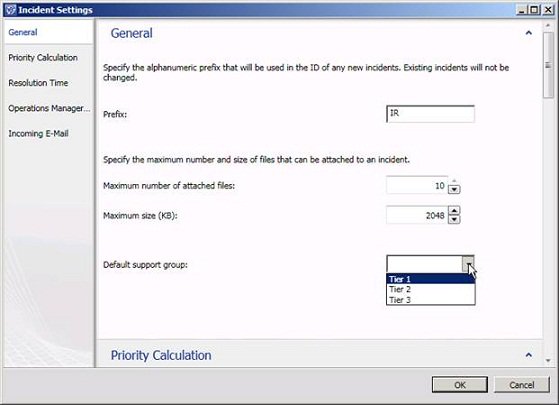
Figure 1: Settings in the General tab
When you click the Priority Calculation option in the Incident Settings window, you should now see the screen shown in Figure 2. In this picture, you will see there is a matrix showing the Urgency level and the effect ( Impact ). By default, there are 9 items that can set values from 1 to 9. By default, 9 is the lowest priority, 1 is the highest priority. These priority calculations are based on the needs of each individual organization.
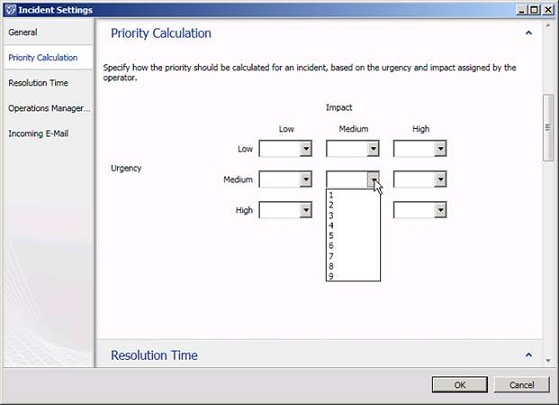
Figure 2: Priority mathematics math
When it comes to response time on the side of help, things with priority 1 will be resolved first compared to other priority events. On the Resolution Time tab, select the response time for each priority level. As shown in Figure 3, you can set each priority level to a certain amount of response time. For example, a first-priority institute will have a 1-hour response time, but a 9-priority incident can spend a week, a month or even a year as default. Make sure to choose a response time that is appropriate for your organization.

Figure 3: Determine the response time for priority levels
Service Manager can integrate Configuration Manager and Operations Manager to create a comprehensive monitoring and management system. If you are running System Center Operations Manager and want to integrate it with Service Manager, provide the address for the Web console URL on the Incident Settings tab in Figure 4.
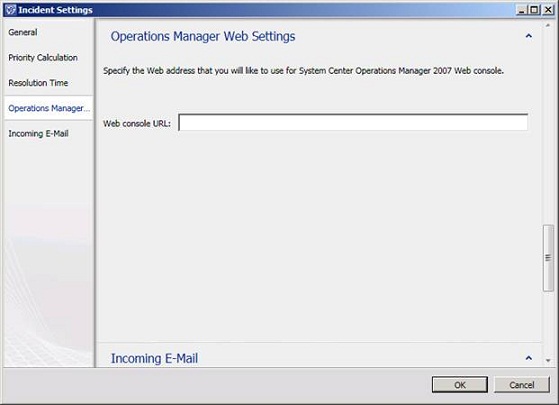
Figure 4: Provide the Web console URL for Operations Manager
Finally, if you want to enable Service Manager settings for receiving mail, configure the settings in the Incoming E-Mail tab for both the SMTP Service drop folder location and SMTP Service bad folder location . In addition, if you want to limit the number of incoming messages, you can change the value in the field next to Maximum number of e-mail messages to process at a time .
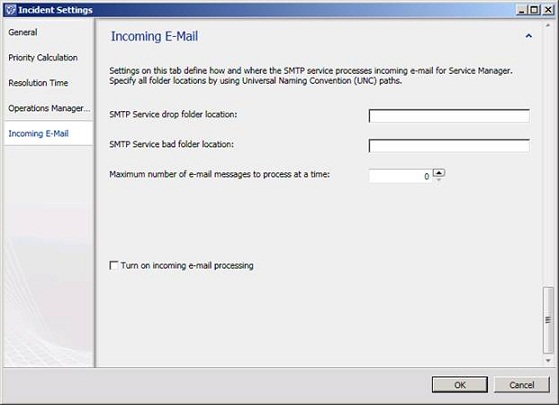
Figure 5: Configure incoming mail settings
Usually the default value is set to urgency and impact options, but it is possible to add an emergency level and impact if desired. Go to navigation in the Library and select Lists . In the Lists list, you will see some options for Impact and Urgency (Figure 6). Double-click one of the lists to open the Properties property page for that list. On the List Properties page, click the Add Item button to add a new item to the list. You will also be asked to choose the management package which offers updates. However you can save them to the default management pack or create a new package if you want.
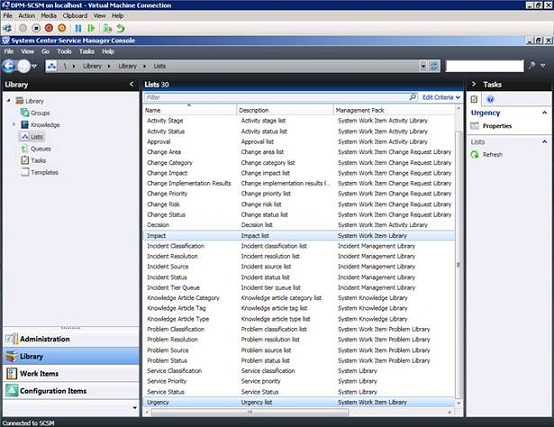
Figure 6: Items in the Library list
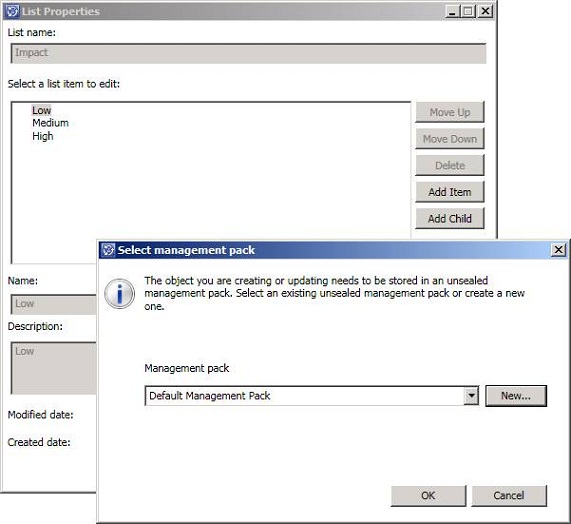
Figure 7: Select the management package
In Figure 8, you will see that I clicked the New button and created a new management package called Customizations . We have also provided a name for the management package as well as a description for it.
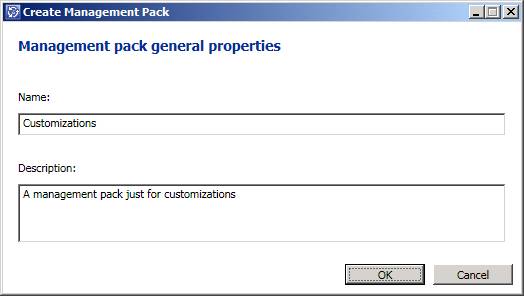
Figure 8: Create a new management package
Once you've created a new management pack, you can add new items to the list. As shown in Figure 9, we added two items - Low / Medium & Medium / High to the list. At this point, if we go back to the Incident Settings page , we will see the priority options shown in Figure 10. On this page, you will see no preference for new options. You must set them up yourself after creating new items.
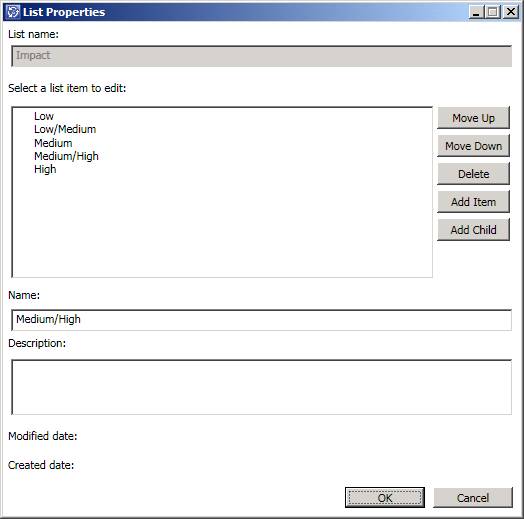
Figure 9: New options added
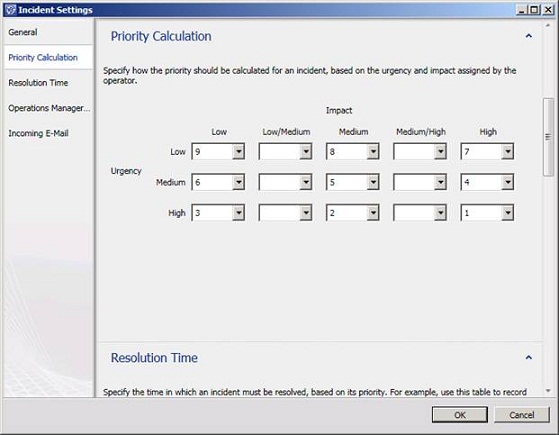
Figure 10: New priority matrix
Configure the settings for the problem (problem)
Above we introduced the differences between events and issues. In Figure 11, you will see the settings available for configuring the Problem log. As incident, the problem logs have the default prefix 'PR'. In the Priority section, you'll see the new urgency and impact items we've just created.
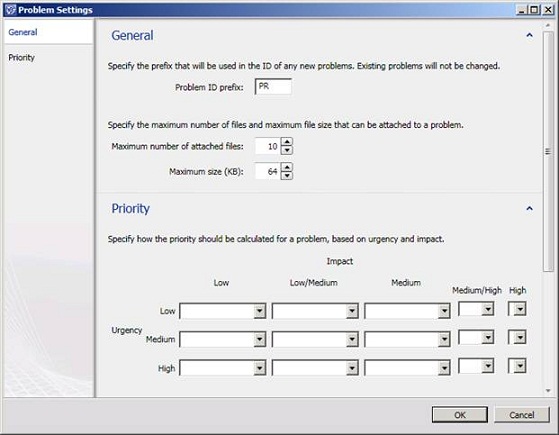
Figure 11: Configuring settings for problems
Configure change settings
Changes in your infrastructure will be recorded through change requests in Service Manager with the CR prefix, as shown in Figure 12. The change requests include the change log file. On the Change Request Settings page, you can decide the number of attached files and their sizes.
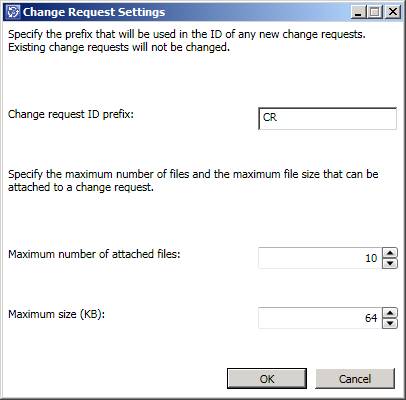
Figure 12: Configuring the required changes settings
Configure action settings
Whenever a problem, event, or request occurs, that action will be recorded to assist in future checking and reference. If you go to the Activity Settings area (Figure 13), you will see where the prefix is determined for the type of action record. There are three types of prefixes to configure:
- The default prefix is AC.
- MA prefix
- Good money RA for review.
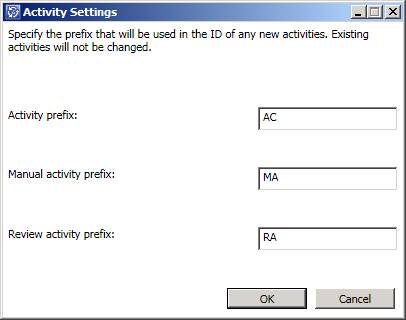
Figure 13: Configuring the required action settings
Configure email notifications
Go to Administration> Notifications> Channels and select the E-Mail Notification Channel . Next, from the Tasks panel, click the Configure option. Your first task is to select the checkbox next to Enable e-mail notifications . Then, click the Add button to open the Add SMTP Server window. Set the domain name for SMTP server, port number and authentication method. If there are multiple SMTP servers, use the Up and Down buttons to change the order the server will be used. Figure 4 shows you the details.
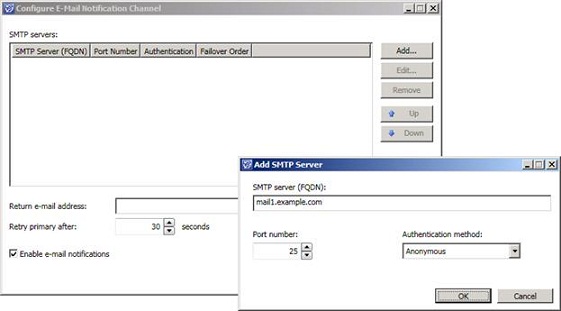
Figure 14: Configure email notification channel
Manage incident classification
Service Manager has a number of default job categories, including networking issues, software issues, email and, etc. Your task is to change the default classification list to suit your needs. your organization's demand. To do so, go to Library , select Lists and select Incident Classification . From the Tasks panel, click the Properties option. Use the Add Item button to add new items to the list. You can also remove some existing items by selecting that item and clicking the Delete button.
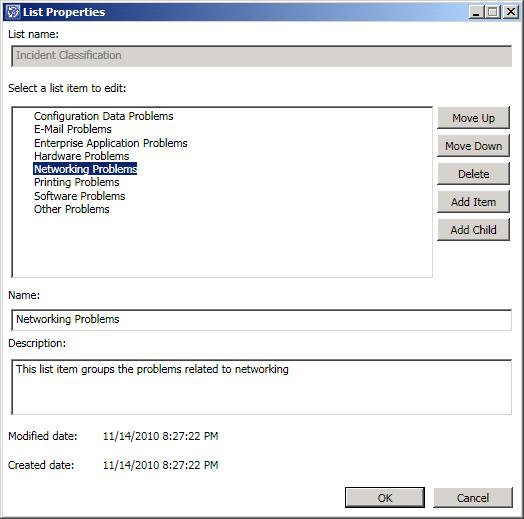
Figure 15
Create things
After setting up the basic configuration, let's move on to create a sample event using the Service Manager console and see what happens. Go to the Work Items navigation area and select Work Items> Incident Management . From the Tasks panel, click Create Incident . You should now see the page shown in Figure 16.

Figure 16: New incident form
On the page shown in Figure 16,
- Affected user. Select the affected user by clicking the '.' button to the right of the Affected user box.
- Title & description. In the title boxes and descriptions, type in the relevant information.
- Classification category. Use the drop-down arrow to the right of the box and select the appropriate item.
- Source. There are many ways to generate an event in Service Manager. In this case, we used the console to add a new incident. Other options include e-mail, phone, self-service portal and Operations Manager.
- Impact. The type of influence is assigned to each event.
- Urgency. The emergency level is assigned to each incident
- Priority. You cannot change priorities here.
- Support group. Group assigns things.
- Assigned to. Processor requests.
You should read it
- Microsoft System Center Service Manager - Part 3: Initial configuration
- Theory - What is Active Directory?
- Check Exchange 2007 with System Center Operations Manager 2007 - Part 3
- Check Exchange 2007 using System Center Operations Manager 2007 - Part 1
- Fix Service Host Local System status using multiple CPUs in Windows 10
- Restore deleted components in Active Directory
- Configure the Lightweight Directory Service service - Part 3
- Configure the Lightweight Directory Service service - Part 4
May be interested
- The reasons for Data Center crash
 data operators sometimes make mistakes that can lead to the data center being stopped. however, most of these incidents can be avoided through maintenance measures, testing procedures and by the feeling and experience of system operators.
data operators sometimes make mistakes that can lead to the data center being stopped. however, most of these incidents can be avoided through maintenance measures, testing procedures and by the feeling and experience of system operators. - What is Microsoft Office Click-to-Run Service? Can it be disabled?
 if you are a microsoft office user, you may have seen microsoft office click-to-run service in your task manager. you may be wondering what the service does and whether it is necessary for your windows computer.
if you are a microsoft office user, you may have seen microsoft office click-to-run service in your task manager. you may be wondering what the service does and whether it is necessary for your windows computer. - What is the Microsoft Office Upload Center? How to disable this tool?
 after you install microsoft office on windows, you may see a small orange icon in the notification area. this icon is the microsoft office upload center feature, but if you do not use this feature, you can disable it to free memory.
after you install microsoft office on windows, you may see a small orange icon in the notification area. this icon is the microsoft office upload center feature, but if you do not use this feature, you can disable it to free memory. - Configuring the Lightweight Directory Service service - Part 2
 in this second part we will continue the introduction of ad lds service by exploring some of the usable technologies and how to deploy ad lds services.
in this second part we will continue the introduction of ad lds service by exploring some of the usable technologies and how to deploy ad lds services. - Visit Envisioning Center and discuss Microsoft's vision for Windows utilities and Windows
 microsoft has decided to open the center of envisioning center - the headquarters of the leading microsoft brains, where the birth of ideas and policies is not only meaningful to microsoft but also can affect the future of the technology world
microsoft has decided to open the center of envisioning center - the headquarters of the leading microsoft brains, where the birth of ideas and policies is not only meaningful to microsoft but also can affect the future of the technology world - Checkover Failover Cluster Strategy - Part 1
 this article will show you how to use system center operations manager to test failover clusters.
this article will show you how to use system center operations manager to test failover clusters. - OPPO warranty center in Vietnam
 below is a summary of all oppo warranty centers in vietnam including the address, product warranty, phone number and opening times. please consult.
below is a summary of all oppo warranty centers in vietnam including the address, product warranty, phone number and opening times. please consult. - Former Microsoft employee revealed the secret in Task Manager on Windows 10
 since its launch in 1995, task manager has become an integral part of windows.
since its launch in 1995, task manager has become an integral part of windows. - What is the Wininit.exe program and why it always works
 there will be a lot of people asking about this strange process in the system, whenever you turn on task manager, you will find the wininit.exe line in the processes list. many people often think that this is part of a virus and will make the computer work slowly or unstable. but you don't have to worry, because this is a default service
there will be a lot of people asking about this strange process in the system, whenever you turn on task manager, you will find the wininit.exe line in the processes list. many people often think that this is part of a virus and will make the computer work slowly or unstable. but you don't have to worry, because this is a default service - What is Catalyst Control Center (CCC.exe)?
 catalyst control center is a utility that comes with drivers, which helps amd graphics cards work. it appears as ccc.exe in the user's task manager and in most cases, you will never have to worry about this.
catalyst control center is a utility that comes with drivers, which helps amd graphics cards work. it appears as ccc.exe in the user's task manager and in most cases, you will never have to worry about this.










 Learn about Microsoft Network Monitor tool - part 1
Learn about Microsoft Network Monitor tool - part 1 Detect and prevent intrusion in Forefront TMG - Part 1: Behavior detection
Detect and prevent intrusion in Forefront TMG - Part 1: Behavior detection Detecting and preventing intrusion in Forefront TMG - Part 2: NIS
Detecting and preventing intrusion in Forefront TMG - Part 2: NIS WPAD configuration in TMG 2010
WPAD configuration in TMG 2010 Build NAS system
Build NAS system Troubleshooting Forefront TMG
Troubleshooting Forefront TMG